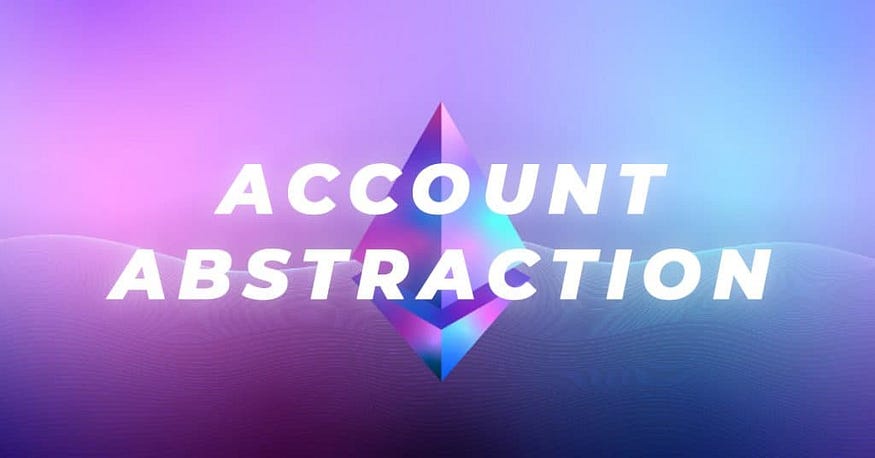The crypto world has witnessed significant growth in the past few years, gaining millions of users. However, the continued widespread adoption of Web3 faces a crucial challenge — improving user experience (UX). If Web3 doesn’t become more user-friendly, people will remain hesitant to transition from their familiar Web2 applications. So, how can we overcome this challenge? One solution is to enhance the UX of blockchain networks like Ethereum through a concept known as Account Abstraction.
This is one of the most recent revolutionary breakthroughs, an idea that could revolutionize how we manage our digital assets, engage with blockchain networks, and improve user experience.

So, What Account Abstraction does? To understand this, lets first understand the different kind of crypto wallets. There are majorly two types of Accounts — Externally Owned Accounts(EOA) and Smart Contract Accounts (SCA)
EOAs use their private keys to sign transactions and initiate actions on the blockchain. This mechanism ensures that only the owner of the private key can authorize transactions from the associated EOA. Smart contract accounts rely on external transactions triggered by EOAs to execute their code. The EOA sends a transaction to the smart contract, specifying the action to be performed, and the smart contract executes the corresponding code in response.
With account abstraction, an account within the EVM can execute code and initiate actions independently, without relying on an external EOA to trigger actions. Account Abstraction in Smart Contract Wallets abstracts the need of key value pairs and need to EOA to trigger actions. Instead, it helps accounts within the EVM to function more autonomously.
Since, the storage of private keys in the form of seed phrase is difficult to store and can be lost easily. Users cannot have access to their accounts once it is lost. It is hectic for users to keep in track their long seed phrase, hexadecimal addresses. Also, if anyone gets access to their private key, all their funds are be lost and we have seen such cases a lot.
Account Abstraction wallets bring in a paradigm shift in the way blockchain addresses and accounts are managed. These wallets can interact with smart contracts and manage their funds using more intuitive and user-friendly identifiers, such as usernames or email addresses. Users can also retrieve their accounts even if their private keys are lost. Account Abstraction can provide bank like features but with the advantages of being decentralized.
If you want to use AA for personal use you can have the following features-
No need for private keys
Account Recovery options without seed phrases
Easy to use interface- login using email & username & smooth transaction
If you are a business owner in Web3 using AA along with above use cases you can:
Set daily transaction limits
Multiple transactions can be combined to save fees. This is called Batch transaction
Require multiple approvals for business transactions. You can even automate payments on some specific days such as Salary days.
You can also set specific salary amounts based on the names, and accounts of your employees, etc.
NOTE: Anyone can use any of the above mentioned features. This is just to simplify how AA caters the needs for specific kind of users.
With the introduction of ERC-4337 and Ethereum Improvement Proposal (EIP) 4337, Ethereum has made it clear that it intends to use account abstraction to improve accessibility across the board in the cryptocurrency space.
How AA provide extra privacy?
In conventional EOAs, all of the assets in your account are accessible to anyone with private key access. Account Abstraction adds an additional degree of security and privacy protection by either customizing their account’s security or by using features such as 2FA. Users can lower the danger of exposure and potential hacking attempts by hiding important information behind an abstracted account. Users can communicate with blockchain networks without disclosing their underlying addresses by using Account Abstraction.
Conclusion
With the help of the account abstraction wallets, developers can wrap Web3 accounts in the same well-known UX standards that are in Web2.
Furthermore, this technique is necessary in order to onboard the next billion users to Web3. The number of accounts registered has increased dramatically in 2023 due to the ease of use that account abstraction (AA) provides to Web3 onboarding. This could mean that Web3 adoption will become more widespread in the future as new use cases encourage people to use the newest version of the web.